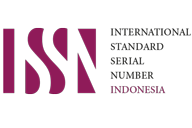Pengaruh Implementasi Pembelajaran Berdiferensiasi pada Pemenuhan Kebutuhan Belajar Peserta Didik Tingkat Sekolah Dasar
DOI:
https://doi.org/10.53863/kst.v5i01.692Keywords:
differentiated learning, learning needs, studentsAbstract
A learning innovation is needed that can increase students' learning motivation because of differences in their learning needs. A learning innovation called differentiated learning tries to meet the learning needs of diverse students. The purpose of this study is to describe how the application of differentiated learning has an impact on meeting the learning needs of students in elementary schools which can be seen from the increase in learning outcomes, the involvement of students in learning, and the ability to think critically of students while learning. The research technique used is known as literature review, used to collect information or sources about a particular subject and can be accessed from various sources, including journals, books, the internet, and other literature. Fulfillment of these learning needs can be seen from various aspects, such as learning readiness which refers to the ability of students to accept new material, a strong interest or desire from students with the potential they want to develop, as well as the profile of students who are influenced by learning styles, level cognitive, cultural background, and so on. According to a number of scientific journals and articles that the authors have examined, varied learning has an impact on how well students achieve their learning needs. When differentiated learning is used, students' learning outcomes improve as a result of meeting their needs and increasing their willingness to learn while engaging in the learning process.
Keywords: differentiated learning, learning needs, students
References
Andini, D. W. (2016). “Differentiated Instruction”: Solusi Pembelajaran Dalam Keberagaman Siswa Di Kelas Inklusif. Trihayu: Jurnal Pendidikan Ke-SD-an, Vol. 2, Nomor 3, Mei 2016, hlm. 340-349
Aprima, D., & Sari, S. (2022). Analisis Penerapan Pembelajaran Berdiferensiasi Dalam Implementasi Kurikulum Merdeka Pada Pelajaran Matematika SD. Cendikia: Media Jurnal Ilmiah Pendidikan, 13(1), 95-101. https://www.iocscience.org/ejournal/index.php/Cendikia/article/view/2960
Avandra, R. (2022). Implementasi Pembelajaran Berdiferensiasi Terhadap Keterampilan Berpikir Kritis Siswa Pada Pembelajaran Ipa Kelas VI SD. Didaktik: Jurnal Ilmiah PGSD STKIP Subang, 8(2), 2944-2960. http://journal.stkipsubang.ac.id/index.php/didaktik/article/view/618
Ayu, E. S. E. (2022). Implementasi Pembelajaran Berdiferensiasi untuk Meningkatkan Motivasi Belajar Siswa Kelas VIB SDN 007 Sagulung. BIODIDAK: Journal of Biology Education and Learning, 2(2), 119-129. https://www.journal.unrika.ac.id/index.php/BioDidak/article/view/4872
Cindyana, E. A., Alim, J. A., & Noviana, E. Pengaruh Pembelajaran Berdiferensiasi Berbantuan Materi Ajar Geometri Berbasis Rme Terhadap Kemampuan Penalaran Matematis Siswa Kelas 3 Sekolah Dasar. JURNAL PAJAR (Pendidikan dan Pengajaran), 6(4), 1179-1187.
Gusteti, M. U., & Neviyarni, N. (2022). Pembelajaran Berdiferensiasi Pada Pembelajaran Matematika Di Kurikulum Merdeka. Jurnal Lebesgue: Jurnal Ilmiah Pendidikan Matematika, Matematika dan Statistika, 3(3), 636-646. https://www.lebesgue.lppmbinabangsa.id/index.php/home/article/view/180
Handiyani, M., & Muhtar, T. (2022). Mengembangkan Motivasi Belajar Siswa melalui Strategi Pembelajaran Berdiferensiasi: Sebuah Kajian Pembelajaran dalam Perspektif Pedagogik-Filosofis. Jurnal Basicedu, 6(4), 5817-5826. https://www.jbasic.org/index.php/basicedu/article/view/3116
Herdianto, Y. (2023). Pengembangan Pembelajaran Diferensisasi Untuk Students Well-Being Pada Siswa Kelas Iv Sdn Beji 02 Kecamatan Junrejo Kota Batu. Jurnal Pendidikan Taman Widya Humaniora, 2(1), 70-92. https://jurnal.widyahumaniora.org/index.php/jptwh/article/view/111
Herwina, W. (2021), ‘Optimalisasi Kebutuhan Peserta didik dan Hasil Belajar dengan Pembelajaran Berdiferensiasi’, Jurnal Perspektif Ilmu Pendidikan, vol. 35, no. 2 hh. 175-181. https://journal.unj.ac.id/unj/index.php/pip/article/view/22057
Hidayat, R.,& Abdillah. (2019). Ilmu pendidikan: konsep, teori, dan aplikasinya. Medan: Penerbit LPPPI.
Iskandar, D. (2021). Peningkatan Hasil Belajar Siswapada Materi Report Text Melalui Pembelajaran Berdiferensiasi di Kelas IX.A SMP Negeri 1 Sape Tahun Pelajaran 2020/2021. Jurnal Pendidikan Dan Pembelajaran Indonesia (JPPI), 1(2), 123–140. https://doi.org/10.53299/jppi.v1i2.48
Pratama, A. (2022). Strategi Pembelajaran Berdiferensiasi Meningkatkan Kemampuan Literasi Membaca Pemahaman Siswa. Jurnal Didaktika Pendidikan Dasar, 6(2), 605-626.
Ridwan, M., Suhar, A. M., Ulum, B., & Muhammad, F. (2021). Pentingnya penerapan literature review pada penelitian ilmiah. Jurnal Masohi, 2(1), 42-51. https://www.journal.fdi.or.id/index.php/jmas/article/view/427
Safarati, N., & Zuhra, F. (2023). Literature Review: Pembelajaran Berdiferensiasi Di Sekolah Menengah. Genta Mulia: Jurnal Ilmiah Pendidikan, 14(1). https://ejournal.stkipbbm.ac.id/index.php/gm/article/view/963
Sanjaya, W. 2013. Penelitian Pendidikan Jenis, Metode, dan Prosedur. Bandung: Penerbit Kencana.
Sugiarto, M. (2017). Metodologi Penelitian Bisnis. Yogyakarta: Andi.
Sukendra, I. K. (2015). Penerapan Strategi Pembelajaran Diferensiasi Progresif Berbantuan Lks Dalam Upaya Meningkatkan Aktivitas Dan Hasil Belajar Matematika Peserta Didik Kelas X Sma N 7 Denpasar Tahun Pelajaran 2014/2015.
Yani, D., Muhanal, S., & Mashfufah, A. (2023). Implementasi Assemen Diagnostic Untuk Menentukan Profil Gaya Belajar Siswa Dalam Pembelajaran Diferensiasi Di Sekolah Dasar. Jurnal Inovasi Dan Teknologi Pendidikan (Jurinotep), 1(3), 241-250. https://lppmbinabangsa.id/index.php/jurinotep/article/view/31
Downloads
Published
How to Cite
Issue
Section
License
Copyright (c) 2023 Diantika Pebriyanti

This work is licensed under a Creative Commons Attribution-NonCommercial-NoDerivatives 4.0 International License.
Authors retain copyright and grant the journal right of first publication with the work simultaneously licensed under a Creative Commons Attribution-ShareAlike 4.0 International License that allows others to share the work with an acknowledgment of the work’s authorship and initial publication in this journal

















